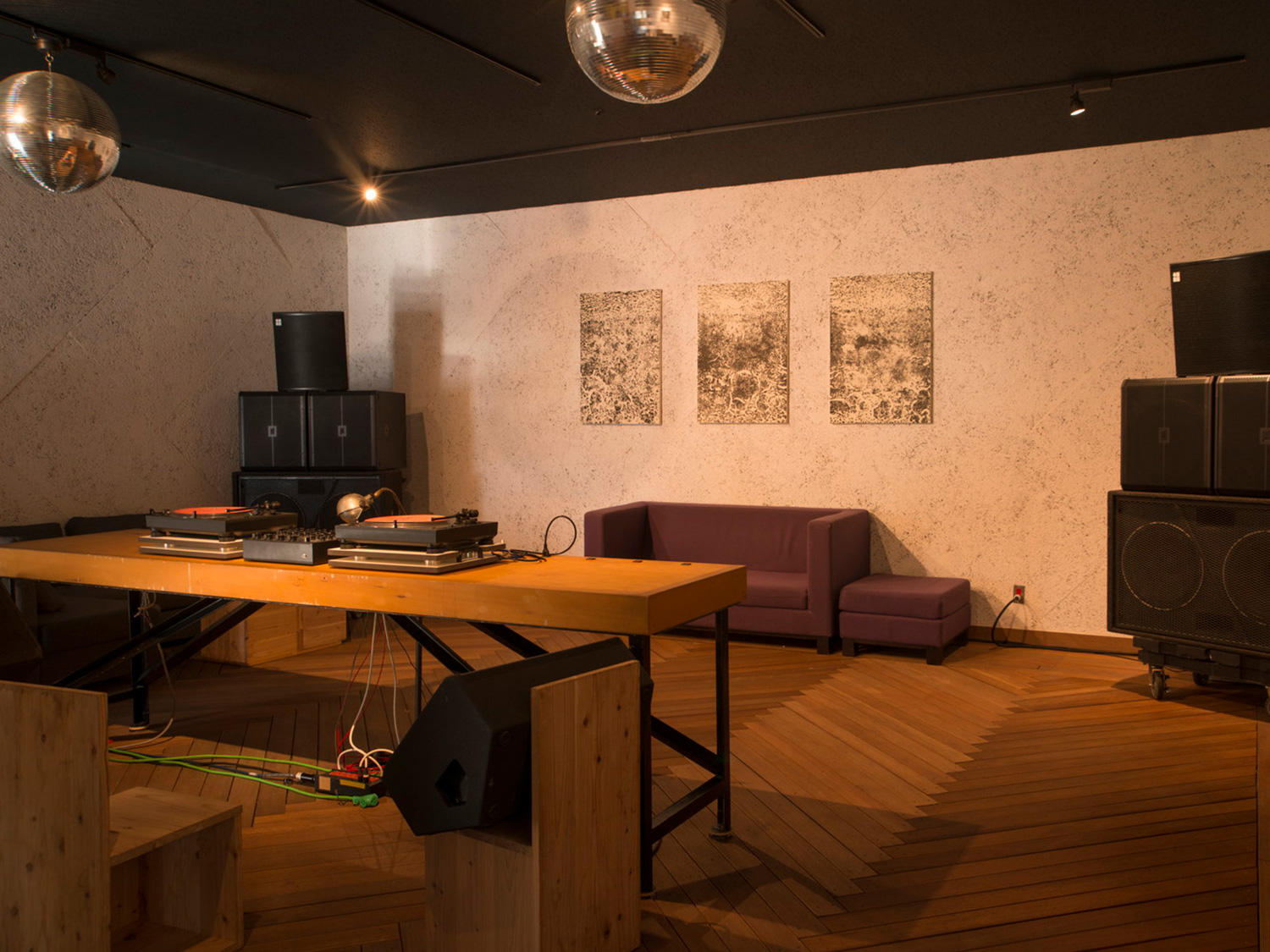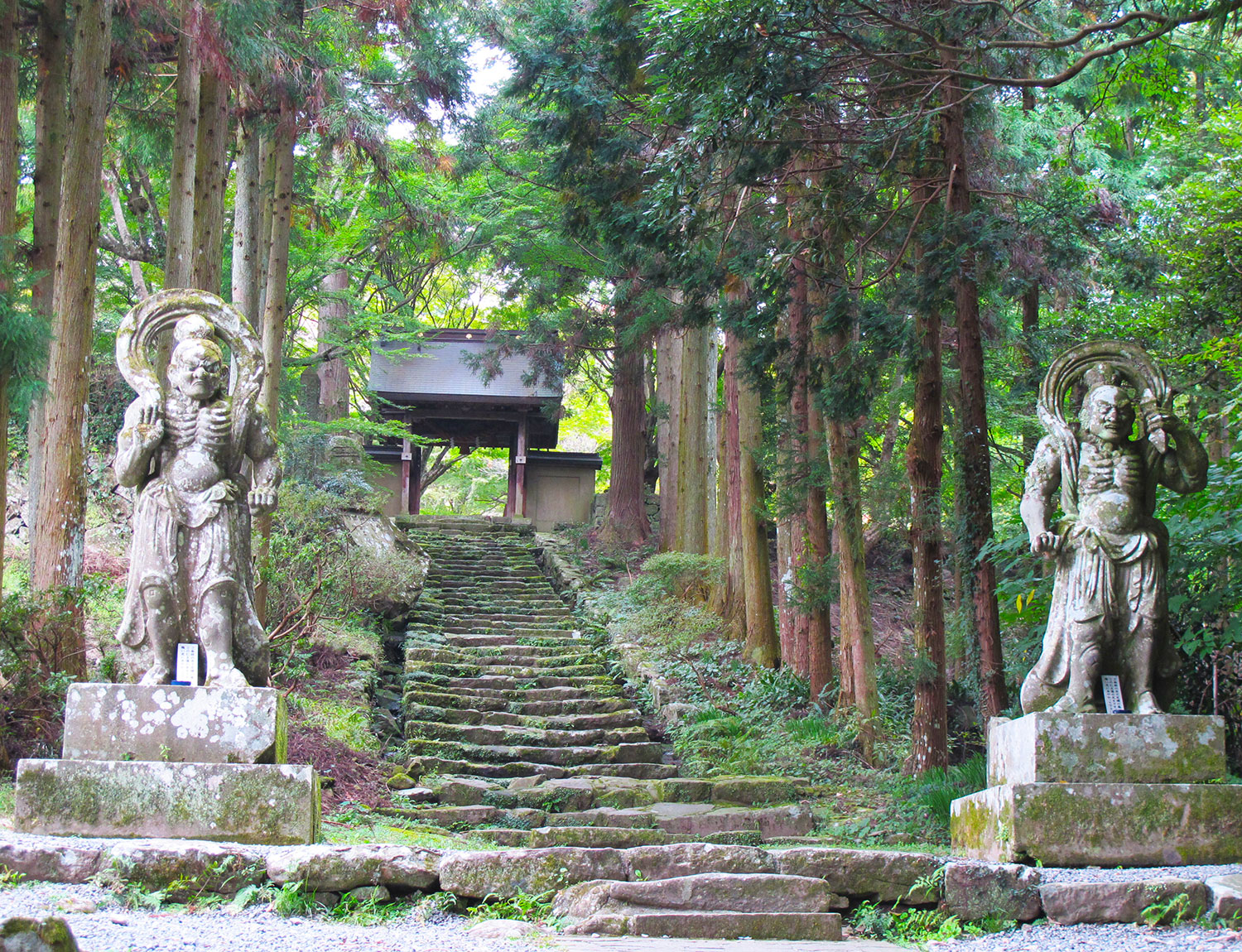
the Boutique at CVMC
CMVC is a contemporary live music and arts space situated in the heart of Hita, a regional town…

Like many of Kunisaki’s temples, Futago-ji traces its founding back to Rokugo-Manzan’s founding monk Ninmon. Futago-ji became Kunisaki’s lead temple in the Warring States Period (1467-1603) and reached the peak of its power in the Edo Period (1603-1868) after receiving the backing of the daimyo samurai lord of the local Matsudaira Clan in Kitsuki. The gate for the exclusive use of the daimyo remains and, always closed, it may never have been opened since the last one past through some 140 or more years ago.
The temple’s extensive grounds and complex of buildings spread over the lower slopes of Mt. Futago-san, the mountain at the centre of the Kunisaki Peninsula. Towering Nio guardian statues at either side of the entrance to Futago-ji are the largest and some of the most impressive on Kunisaki. Local legend has that non-believers crossing the classic, arched stone bridge sitting in front of these two muscle-bound characters, are suddenly turned into fervent Buddhists, but if a cow or horse passes over it will collapse.
For many centuries the temple has been a destination for the devout and especially for childless couples to receive blessings in order to conceive. Today, many others also visit to enjoy Futago-ji’s abundance of graceful maple trees, lushly green from spring through summer their leaves turn into a riot of reds and yellows in the autumn.
At a glance
The Kunisaki Peninsula's principal temple set in extensive grounds at the foot of a mountain.